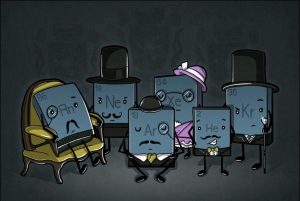What is Noble Gas?
Now just to be clear we are not talking about holding in your farts in whilst you’re on a date, albeit that is a noble act. Nor are we referring to the gaseous excretions of the royal classes in society although this is not too far from the facts about the noble gases of the period table.
The noble gases make up a group of chemical elements in the far right hand column of the periodic table that all have similar properties. Under standard conditions, they are all odorless, colorless, gases with very low chemical reactivity. The six noble gases that occur naturally are helium (He), neon (Ne), argon (Ar), krypton (Kr), xenon (Xe), and the radioactive radon (Rn).
These elements have gone by various names over the centuries such as inert gases and rare gases but Noble gases was first coined in 1898 by Hugo Erdmann to indicated the extremely low level of reactivity with other elements. Their reactivity is so low that only a handful of noble gas compounds are possible, but why name them noble?
Well the reason behind this is; if you look at the periodic table by country of discovery you will notice that all the noble gases were discovered by countries that have an aristocracy or “Noble Class” and if there is one thing that everyone should know about the nobles of most countries, it’s that they generally don’t mix with the rest of the population. So this swipe at the noble classes of their countries is actually a very apt method of conveying the fact that these chemical elements don’t like to mix with the other element.

To be slightly more technical about it; They were once labeled group 0 in the periodic table because it was believed they had a valence of zero, meaning their atoms cannot combine with those of other elements to form compounds. However, it was later discovered some do indeed form compounds, causing this label to fall into disuse.
The noble gases have full valence electron shells. Valence electrons are the outermost electrons of an atom and are normally the only electrons that participate in chemical bonding. Atoms with full valence electron shells are extremely stable and therefore do not tend to form chemical bonds and have little tendency to gain or lose electrons. However, heavier noble gases such as radon are held less firmly together by electromagnetic force than lighter noble gases such as helium, making it easier to remove outer electrons from heavy noble gases and form compounds.

So next time you look at the periodic table remember it’s not just a handy chemical element reference device for students and chemical engineers but it’s a look at human history and it’s as much a part of our culture as the elements are a part of us.
Stay Curious – C.Costigan




